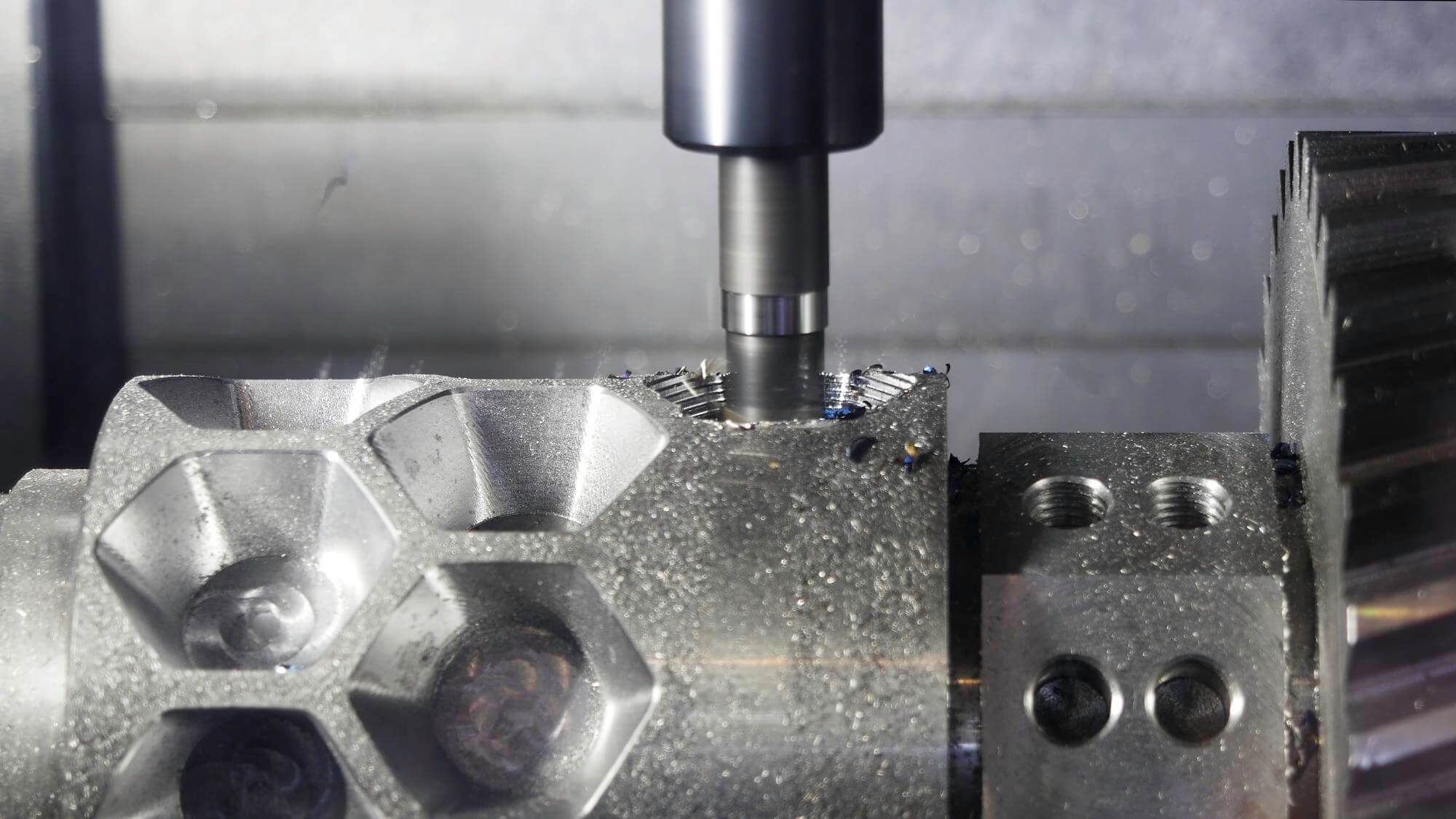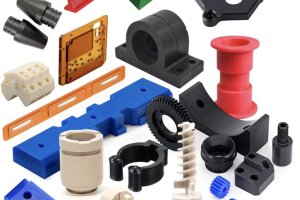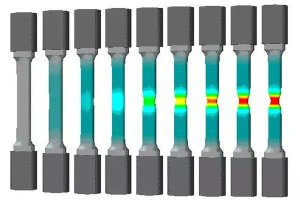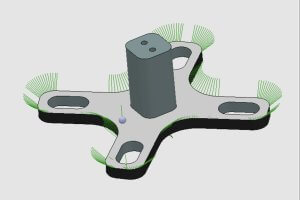Introduction: The Unique Challenges of Hard-to-Cut Materials
In the fast-paced world of manufacturing, precision is key, and the ability to work with a wide range of materials is essential. However, not all materials are easy to machine, and some can be downright difficult. These hard-to-cut materials are often the backbone of industries requiring high-performance components—think aerospace, automotive, and medical devices. But what makes these materials so challenging? More importantly, how can manufacturers efficiently machine these materials without compromising quality?
This article dives into the secrets of efficiently cutting hard-to-cut materials in CNC machining, offering insights tailored for those looking to purchase non-standard parts. Whether you’re a procurement specialist or a manufacturer, understanding these materials will help you make informed decisions and achieve the best results in your machining projects.
What Makes a Material Hard-to-Cut?
Defining Hard-to-Cut Materials
Hard-to-cut materials are those that pose significant challenges during machining due to their physical and mechanical properties. These materials typically exhibit one or more of the following characteristics:
- High Hardness: Materials like hardened steels, ceramics, and carbides have high hardness levels, which makes them resistant to deformation but also increases the wear on cutting tools.
- High Strength: High-strength materials such as titanium alloys and superalloys require greater force to cut, leading to increased tool wear and energy consumption.
- High Toughness: Materials with high toughness, like certain stainless steels, resist fracture, making it difficult to achieve clean cuts without causing damage to the tool or the workpiece.
- Low Thermal Conductivity: Materials like titanium and certain plastics do not dissipate heat well, leading to higher temperatures at the cutting zone and potential thermal damage.
- High Ductility: Highly ductile materials, including some aluminum alloys and pure metals, tend to form long, continuous chips that can tangle around the tool, leading to surface finish issues and possible tool breakage.
Examples of Hard-to-Cut Materials
The table below provides examples of common hard-to-cut materials, along with their key properties that contribute to machining challenges:
| Material | Key Properties | Typical Applications |
|---|---|---|
| Titanium Alloys | High strength, low thermal conductivity | Aerospace, medical implants |
| Stainless Steels | High toughness, work hardening tendency | Food processing, chemical equipment |
| Nickel Superalloys | High temperature resistance, high hardness | Turbine blades, aerospace components |
| Ceramics | Extremely high hardness, brittle | Cutting tools, electronics |
| Hardened Steels | High hardness, high strength | Dies, molds, heavy machinery |
The Challenges of Machining Hard-to-Cut Materials
High Cutting Forces and Tool Wear
One of the primary challenges when machining hard-to-cut materials is the high cutting forces required. These forces increase tool wear, reducing tool life and making the process less economical. The high hardness and strength of these materials put significant stress on cutting tools, leading to faster wear and frequent tool changes.
Thermal Issues
Thermal management is another critical challenge. Many hard-to-cut materials have low thermal conductivity, which means that the heat generated during cutting does not dissipate quickly. This can lead to thermal deformation of the workpiece, reduced tool life, and even thermal damage to the material itself.
Work Hardening
Work hardening is a phenomenon where the material becomes harder and more difficult to machine as it is being cut. This is particularly common in materials like stainless steels and nickel-based alloys. Work hardening can lead to increased tool wear, surface integrity issues, and higher energy consumption during machining.
Surface Finish and Dimensional Accuracy
Achieving a good surface finish and maintaining dimensional accuracy are more challenging with hard-to-cut materials. The high cutting forces, coupled with potential thermal issues and work hardening, can lead to surface imperfections such as roughness, burrs, and dimensional deviations.
Secrets to Efficient Machining of Hard-to-Cut Materials
1. Selecting the Right Tool Material and Geometry
Choosing the right tool material is crucial for efficient machining of hard-to-cut materials. Common tool materials used for machining these challenging materials include:
- Carbide Tools: Carbide tools are commonly used for their hardness and wear resistance. They are suitable for cutting high-strength steels and superalloys.
- Ceramic Tools: Ceramic tools offer excellent hardness and heat resistance, making them ideal for high-speed cutting of hardened steels and cast iron.
- CBN (Cubic Boron Nitride) Tools: CBN tools are extremely hard and are often used for finishing operations on hardened materials.
- PCD (Polycrystalline Diamond) Tools: PCD tools are used for cutting non-ferrous materials and composites, offering superior wear resistance.
Tool geometry also plays a critical role. The rake angle, clearance angle, and cutting edge radius should be optimized based on the material being machined. For example, a positive rake angle reduces cutting forces, while a sharper cutting edge can help in achieving a better surface finish.
2. Optimizing Cutting Parameters
Cutting parameters such as cutting speed, feed rate, and depth of cut must be carefully selected to balance tool life and machining efficiency. Here’s how to optimize each parameter:
- Cutting Speed: Generally, lower cutting speeds are recommended for hard-to-cut materials to minimize heat generation and tool wear. However, this must be balanced with the need for productivity.
- Feed Rate: A lower feed rate can help reduce cutting forces and improve surface finish, but it may also increase machining time. Finding the right balance is key.
- Depth of Cut: Shallow depths of cut are preferred to reduce cutting forces and minimize tool wear. However, deeper cuts may be necessary for roughing operations.
3. Advanced Cooling and Lubrication Techniques
Cooling and lubrication are essential for managing the heat generated during machining. Advanced techniques include:
- Flood Cooling: A continuous flow of coolant can help dissipate heat and reduce tool wear. However, it may not be sufficient for materials with very low thermal conductivity.
- High-Pressure Coolant: Using high-pressure coolant jets can improve cooling efficiency, chip evacuation, and surface finish.
- Minimum Quantity Lubrication (MQL): MQL uses a small amount of lubricant mixed with compressed air to reduce friction and heat. It’s an environmentally friendly alternative to traditional cooling methods.
4. Using Modern CNC Techniques
Modern CNC techniques and strategies can enhance the machining of hard-to-cut materials. These include:
- High-Speed Machining (HSM): HSM involves using higher spindle speeds and feed rates with lower depths of cut. This technique can improve surface finish and reduce tool wear.
- Adaptive Machining: Adaptive machining adjusts the cutting parameters in real-time based on the condition of the tool and the material. This can help optimize tool life and part quality.
- Trochoidal Milling: This advanced milling technique involves a circular toolpath that reduces the engagement time of the cutting tool with the material, thereby reducing heat generation and tool wear.
5. Proper Tool Maintenance and Monitoring
Regular tool maintenance and monitoring are crucial for efficient machining of hard-to-cut materials. Implementing a tool management system can help track tool wear and schedule timely replacements. Additionally, using tool condition monitoring systems can prevent unexpected tool failures and ensure consistent machining quality.
Case Study: Efficient Machining of Titanium Alloys
Titanium alloys are a classic example of hard-to-cut materials due to their high strength, low thermal conductivity, and tendency to work harden. Let’s explore how the strategies discussed above can be applied to efficiently machine a titanium alloy component.
Material Properties and Challenges
- Material: Titanium Alloy (Ti-6Al-4V)
- Key Properties: High strength-to-weight ratio, low thermal conductivity, excellent corrosion resistance
- Challenges: High cutting forces, rapid tool wear, thermal issues, work hardening
Tool Selection and Geometry
For machining Ti-6Al-4V, carbide tools with a positive rake angle are recommended. The cutting edge should be sharp to minimize cutting forces, and a small corner radius can help improve tool life.
Cutting Parameters
- Cutting Speed: 60-100 m/min (lower than for most steels to reduce heat generation)
- Feed Rate: 0.1-0.2 mm/rev (a balance between surface finish and machining time)
- Depth of Cut: 1-3 mm (for roughing) and 0.2-0.5 mm (for finishing)
Cooling and Lubrication
High-pressure coolant (70-100 bar) is ideal for machining titanium alloys. This helps in cooling the cutting zone, improving chip evacuation, and reducing the risk of thermal damage to the workpiece.
CNC Techniques
Trochoidal milling can be employed for roughing operations to reduce the engagement time of the tool with the material, thereby minimizing heat buildup and tool wear. High-speed finishing can be used to achieve a superior surface finish.
Results
By applying these strategies, the machining time for the titanium alloy component was reduced by 30%, tool life was extended by 40%, and surface finish was improved by 20%.
Mastering the Art of Machining Hard-to-Cut Materials
Machining hard-to-cut materials is undoubtedly challenging, but with the right tools, techniques, and strategies, it is possible to achieve efficient and high-quality results. For those involved in the procurement of non-standard parts, understanding these machining secrets can help ensure that your components are manufactured to the highest standards.
By selecting the appropriate tool materials, optimizing cutting parameters, using advanced cooling and lubrication techniques, and leveraging modern CNC machining strategies, manufacturers can overcome the challenges
posed by hard-to-cut materials. The result is a more efficient machining process, longer tool life, and superior part quality—key factors that contribute to the overall success of any machining project.
For procurement specialists, this knowledge is invaluable when choosing suppliers and specifying machining requirements for complex parts. Understanding the intricacies of machining hard-to-cut materials will help you make informed decisions that lead to better performance and reliability of the final product.
Other Articles You Might Enjoy
- Beyond Cutting: Exploring the Multifaceted CNC Machining Process
1. Introduction: Unveiling the Layers of CNC Machining In this introductory section, we peel back the layers of the CNC machining process, going beyond the traditional understanding of cutting. It…
- CNC Machining for Medical Applications: Compliance and Material Selection?
Introduction to CNC Machining in Medical Applications CNC or Computer Numerical Control machining is a manufacturing process wherein pre-programmed computer software dictates the movement of factory tools and machinery. This…
- Exploring Bead Blasting In CNC Machining(cnc cutting tools Hale)
Bead blasting is a crucial technique applied extensively in the realm of Computer Numerical Control (CNC) machining. This process transforms the exterior aesthetics and surface quality of machined parts, augmenting…
- Comparing Machinability of Various Tool Steels: What's the Best Choice?
Understanding Tool Steels and their Machinability Tool steels are referred to as an extensive variety of carbon and alloy steels known for their distinctive hardness, abrasion resistance, and ability to…
- Understanding Bead Blasting in CNC Machining(cnc cutting tools Miles)
CNC machining is a manufacturing process known for its precision and versatility. One important aspect of this process that contributes significantly to both its functionality and finish quality is bead…
- The Future of Medical Device Manufacturing: CNC Machined Stainless Steel
Introduction to Medical Device Manufacturing Medical device manufacturing is a crucial sector in the healthcare industry, powering a myriad of medical procedures and treatments worldwide. This field involves the design,…









